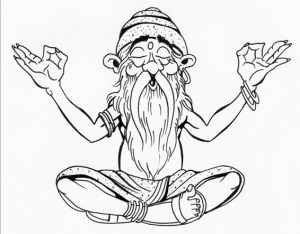Civil society in Singapore stands at a crossroads. Sociopolitical issues are actively debated, opinions are readily offered and there is, in general, a constant clamour for increased engagement and space for debate in the public sphere. But, for all the noise, is there real impetus towards taking the initiative on action?
Over a month ago, for instance, there was much furore over the resignation of Singa, the mascot of the Singapore Kindness Movement (SKM). Singa’s “resignation letter” noted that he was “too tired to continue facing an increasingly angry and disagreeable society” and that “it (was) time for real people to step up and for the mascot to step aside”.
The campaign polarised public opinion, with criticism directed at the SKM for Singa’s cynicism. While the dust has since settled, it is worth revisiting matters through the lens of civil society in Singapore. Why not, for instance, interpret Singa’s “resignation” as a shift away from government-initiated and run campaigns?
One critic had fretted that Singa the Lion was setting a bad example for his young son by “giving up”. If a make-belief mascot has more influence on the personal development of a young boy than do his parents, family and greater society, well, it is a damning indictment of our social responsibility.
Some also argued that Singa was a failure because he was a plastic representation of a top-down movement that lacked connectivity. So should we not then celebrate the fact that Singa’s inability to relate to a different generation has been recognised, and the responsibility of making this society a gracious one passed on to “the real people”?
FILLING UP SOCIAL SPACES
Civil society in Singapore is evolving and, in many ways, in a positive fashion. People are coming together, mobilising to react to issues, policies and events. This is to be lauded and is a phenomenon that must continually evolve as people seek a place in the country’s sociopolitical sphere.
However, it is also worth wondering if this evolution has been rather limited to a possibly vocal minority, or to issues that are pressing or generate a certain amount of political controversy.
A politically active and reactive civic society will be taken more seriously when it makes itself more socially relevant and assertive. As we demand more political space, it is good to also see social spaces being filled with initiatives that have taken on life apart from state-prescribed campaigns and programmes.
Individuals and groups have been mobilising to address social issues such as (and this makes Singa’s exit timely) advocating graciousness and kindness. Groups such as Mission: Singapore and Project Awareness organise activities to raise awareness, aid those in need or simply bring a smile to people’s faces through flash mobs, giving out free hugs and other fun programmes.
The Stand up for Singapore movement holds various events to “build a culture of love, gratitude and graciousness”. Last National Day, for instance, volunteers travelled on MRT trains distributing red and white badges with the slogans “Stand up for our Elderly” and “Stand up for our Mothers”.
Student initiatives, too, are on the rise. The Singapore Management University’s Initiatives for Social Enterprise, for example, comprises students who use their business knowledge to nurture social enterprises, by teaching members finance, marketing and other business skills.
The Tamil Language Society at the National University of Singapore runs the Saadhana tuition programme in collaboration with the Singapore Indian Development Association (SINDA) and the Singapore Indian Education Trust, offering subsidised high-quality tuition to junior college students.
The scope for student initiatives is growing and no longer limited to small-scale activities, and young people are increasingly showing a keen interest in being part of a civil society that takes ownership of issues.
This dynamism often does not make the headlines and many Singaporeans may remain unaware of the shifting sands in society.
During the peak of the haze last month, as PSI readings reached previously unimaginable levels, it was met with alarm and the expected panic. The Government moved to address concerns and to reassure Singaporeans that it was doing all it could.
There were those, though, who thought action was not being taken swiftly enough. As has been well-publicised, netizens and groups of people mobilised and helped get N95 masks to those who needed them the most, or even offered up air-conditioned rooms to those without that benefit at home.
A group of undergraduates from the National University of Singapore’s Tembusu College gave out masks to underprivileged families; other student groups distributed masks to elderly people and children.
These are encouraging signs that civil society in Singapore is capable of social action while also functioning as critics. While the haze was a temporary crisis, the clarity it offered must be permanent.
Pravin Prakash
The Social Swami
This article was written for the TODAY paper and was published online on 23rd July 2013
